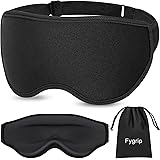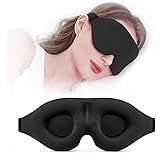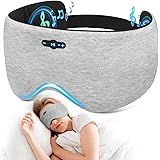Ever found yourself staring at the ceiling, mind racing? You might toss and turn. Sleep often feels elusive. This happens to many of us.
The video above offers a unique solution. It uses ASMR to guide you. It helps you drift into peaceful slumber. It focuses on gentle, calming audio cues. This deepens your relaxation. This post expands on these powerful techniques.
Harnessing ASMR for Deep Sleep: A Scientific Approach
ASMR, or Autonomous Sensory Meridian Response, describes a tingling sensation. It usually starts on the head. It moves down the back of the neck. It extends along the spine. This feeling is often triggered by specific auditory or visual stimuli. These include whispers, soft tapping, or gentle movements. The video expertly leverages these.
Scientists believe ASMR activates specific brain regions. These include the medial prefrontal cortex. This area is associated with self-awareness. It also involves the nucleus accumbens. This handles reward processing. The insula, for emotional arousal, is also involved. These activations can lead to profound relaxation. It promotes a sense of well-being. This is crucial for achieving restful sleep.
The Neurobiology of Relaxation through Sensory Stimuli
ASMR triggers help regulate the autonomic nervous system. This system controls involuntary bodily functions. It shifts the body from a sympathetic (“fight or flight”) state. It moves towards a parasympathetic (“rest and digest”) state. This transition reduces heart rate. It lowers blood pressure. It prepares the body for sleep. This process is like a dimmer switch for your brain. It gradually lowers the mental activity. It ushers in a state of somnolence.
The guided nature of ASMR also engages cognitive defusion. This technique separates thoughts from emotions. You observe thoughts without judgment. The gentle directives in the video foster this. They prevent rumination. They steer the mind away from daily stressors. This allows for an easier transition to sleep.
Crafting Your Personal Sleep Sanctuary with ASMR
The video encourages creating a mental “shelter.” This mental space protects you. It shields you from external disruptions. This is a powerful form of guided imagery. It helps detach you from your surroundings. You can imagine fluffy cotton candy clouds. You might visualize shimmering constellations. An iridescent bubble serves as a personal dome. This imaginative exercise provides a mental safe haven. It’s a sanctuary for your mind.
This visualization technique is more than just dreaming. It actively prepares your brain for sleep. It lowers your cognitive load. It reduces the vigilance response. Your brain learns to associate this imagery with safety. This promotes a deeper, more undisturbed rest. Think of it as constructing a mental cocoon. You are safe inside. Nothing from outside can intrude. This fosters a sense of psychological comfort.
Engaging the Active Mind: Cognitive Games and Auditory Triggers
An active mind can be a formidable barrier to sleep. The video cleverly addresses this. It introduces “guess the trigger” games. This technique occupies your mind lightly. It prevents it from dwelling on anxieties. The first object described is a small purse. It is made of faux leather. It is cream, an eggshell white. It features a golden moon. It has five small metallic stars. The tactile sounds of this item are key. They provide gentle auditory stimuli.
Next, a candle is used. Its small glass container is beige caramel. It has black polka dots. These dots resemble brown sugar boba. The container is notably charred. This indicates frequent use. The sounds of glass and wax are distinct. They engage the auditory cortex subtly. Finally, a small hardcover book is introduced. It is about the size of a small sheet of paper. It contains exactly 64 pages. The title is One Fish, Two Fish, Red Fish, Blue Fish. Its cover is yellow. It depicts a specific arrangement of fish: one white fish at the top, two green fish below, one red fish, then one blue fish, all above blue water. The rustling pages and gentle tapping are classic ASMR triggers. They provide diverse sensory input. Each trigger acts like a soft anchor. They ground your attention. This prevents mental wandering. It facilitates a quiet internal state.
Word Association & Storytelling: Guiding the Mind to Stillness
The video transitions to word association. This activity keeps the mind gently engaged. It prevents it from straying. Words like “golden,” “light bulb,” “eyeball,” and “rainbow” are offered. These simple prompts encourage a relaxed mental flow. It is a form of controlled, light cognitive activity. This primes the brain for rest. It is a step towards a hypnagogic state.
Building on this, the video introduces a “story-based” word association game. This is akin to improv exercises. You take a word, like “flower,” and let your thoughts cascade. Each thought leads to another. This is a form of ‘stream of consciousness.’ It gently diffuses an overactive mind. It prevents deep engagement with any single thought. This is effective for calming the prefrontal cortex. It prepares the brain for sleep. It’s like watching clouds drift by. You acknowledge each one. You let them pass. This avoids any mental “stickiness.”
The Power of Descriptive Narration and Imaginative Play
The presenter describes personal details. This includes pink hair and winged eyeliner. They mention a beige beret. They detail acrylic nails with daisies and bumblebees. A golden necklace, a “fat, pouchy, golden heart,” is also described. It’s an early 2000s Juicy Couture piece. This detailed visual description, despite closed eyes, stimulates imagination. It keeps the visual cortex softly active. It prevents boredom without overstimulation. It also shifts focus from internal monologue.
The “create a friend” exercise takes this further. It encourages full imaginative immersion. You consider their being, color scheme, and voice. This personalized mental creation further occupies the mind. It is a playful diversion. It primes the brain for a dreamlike state. These exercises are gentle invitations. They lead you into the threshold of sleep. They are similar to a child’s bedtime story. They create a comforting mental landscape. This helps reduce any pre-sleep anxiety. The final prompts about what you’d like to dream about offer gentle suggestions. They plant positive seeds for your sleep journey. They encourage a relaxed, receptive mindset.
Integrating ASMR into Your Bedtime Ritual
Using ASMR for sleep can transform your night. Consistency is key for optimal results. Incorporate ASMR into your nightly routine. This could be 15-30 minutes before bed. Ensure your bedroom is dark and cool. Minimize other distractions. Use comfortable headphones for a full immersion. The gentle auditory cues will become signals. Your body will learn to relax. Your mind will quiet. This prepares you for deep, restorative sleep. This ritual helps your circadian rhythm. It improves sleep hygiene. Regular practice enhances effectiveness. Embrace the calm. Allow yourself to rest.








